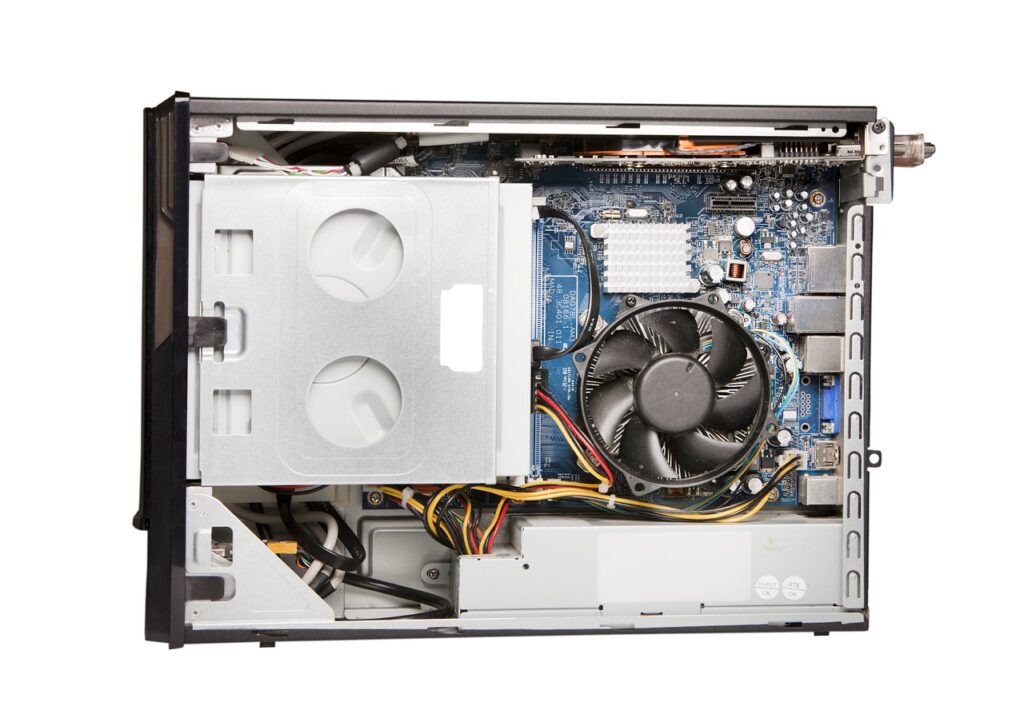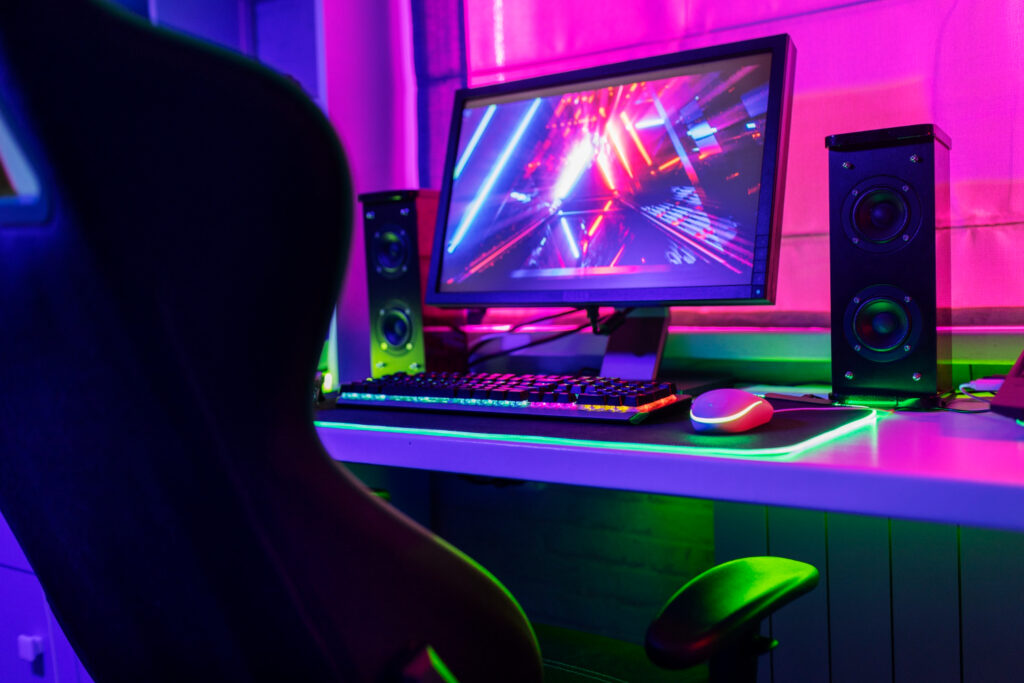If you are a gamer, you know how important it is to have a good gaming setup. A gaming setup is more than just a computer; it is hardware and software that allows you to enjoy your favorite games at their best. However, building a gaming setup can be expensive and confusing. There are several components to choose from, each with advantages and disadvantages. How do you know which ones are worth your money? How do you balance performance and budget? How do you avoid common mistakes and pitfalls?
Table of Contents
In this blog post, we will answer these questions and more. We will guide you through the components of a gaming setup, the costs of each PC component, the pros, and cons of building vs. buying a gaming setup, and other considerations. By the end of this post, you will have a clear idea of how much a gaming setup should cost and how to build one that suits your needs and preferences. First, we analyze the accessories and parts needed for your gaming PC.
Parts Needed for Gaming PC
Before estimating the cost of a gaming setup, you need to know what components you need for it. A gaming setup is more than just a computer. It is a combination of hardware and software that allows you to enjoy your favorite games at their best. According to Intel, the following parts make up a good gaming PC:

- CPU: The central processing unit (CPU) is the brain of your computer. It executes the instructions of your games and other programs. The CPU’s performance is measured by its clock speed (how fast it can process data) and its core count (how many tasks it can handle simultaneously). For gaming, you want a CPU with a high clock speed and enough cores to run your games smoothly. Some popular CPU brands are Intel and AMD.
- GPU: The graphics processing unit (GPU) is the heart of your gaming setup. It renders the graphics of your games and displays them on your monitor. The GPU’s performance is measured by its memory size (how much data it can store) and clock speed (how fast it can process data). For gaming, you want a GPU with enough memory and clock speed to handle high-resolution and high-frame-rate games. Some popular GPU brands are Nvidia and AMD.
- Motherboard: The motherboard is the backbone of your gaming setup. It connects all the other components and allows them to intercommunicate. The motherboard’s compatibility is determined by its socket type (which matches the CPU), its chipset (which controls the features and functions of the motherboard), and its form factor (which matches the case size). For gaming, you want a motherboard that supports your CPU, has enough slots and ports for your other components, and has features that enhance your gaming experience, such as overclocking, RGB lighting, etc. Some popular motherboard brands are Asus, MSI, Gigabyte, etc.
- RAM: The random access memory (RAM) is the short-term memory of your gaming setup. It stores the data that your CPU and GPU need to access quickly while running your games and other programs. The RAM’s performance is measured by its capacity (how much data it can store) and its speed (how fast it can transfer data). For gaming, you want RAM to have enough capacity and speed to run your games without lag or stuttering. Some popular RAM brands are Corsair, G.Skill, Kingston, etc.
- Storage: The storage device is the long-term memory of your gaming setup. For gaming, you want a storage device with enough capacity to store all your games and enough speed to load them quickly. There are two types of storage devices: hard disk drives (HDDs) and solid-state drives (SSDs). HDDs generally have more capacity but are slower than SSDs. SSDs have less space but are faster than HDDs. Some popular storage device brands are Western Digital, Seagate, Samsung, etc.
- PSU: The power supply unit (PSU) is the lifeline of your gaming setup. It converts the electricity from the wall outlet into the voltage and current that your components need to operate. The PSU’s performance is measured by its wattage (how much power it can deliver) and its efficiency (how well it can convert power without wasting energy). A PSU with 300-600 watts is enough for gaming. Some popular PSU brands are Corsair, EVGA, Seasonic, etc.
- Case: The case is the shell of your gaming setup. It houses all your components and protects them from dust, damage, etc. The case’s performance is measured by its size (how much space it has for your components), its airflow (how well it can cool your components), and its aesthetics (how good it looks). For gaming, you want a case with adequate space for your components and their cooling systems, enough airflow to keep them from overheating, and enough aesthetics to match your personal style. Some popular case brands are NZXT, Cooler Master, Fractal Design, etc.
These are the basic components of a gaming setup. Nonetheless, you might want to optional components/accessories for your gaming PC.
In short, if you know how much any of the above components of a gaming PC cost, you’ll have a very good estimate of the price of the gaming PC. So let’s see what these components cost.
Cost of Gaming PC Components
- CPU: The CPU is among the most crucial and expensive components of your gaming PC. The cost of a CPU depends on its brand, model, performance, and availability. Generally, the higher the clock speed and core count, the higher the price. According to Review42, the average price to build a gaming PC with a CPU suited for gaming ranges from $150 to $350. For example, the AMD Ryzen 5 5600X, which is one of the best CPUs for gaming right now, costs around $300.
- GPU: The GPU is another crucial and costly component of your gaming PC. The cost of a GPU depends on its brand, model, performance, and availability. Generally, the higher the memory size and clock speed, the higher the price. The average price to build a gaming PC with a GPU suited for gaming ranges from $200 to $1500. For example, the Nvidia GeForce RTX 3060 Ti, one of the best GPUs, costs around $400.
- Motherboard: The motherboard is the component that connects all your other PC parts and determines their compatibility. The cost of a motherboard depends on its brand, model, features, and form factor. Generally, the more ports, features, and larger form factor, the higher the price. Internet research shows that the average price to build a gaming PC with a motherboard suited for gaming ranges from $100 to $300. For instance, consider the Asus ROG Strix B550-E Gaming, one of the best motherboards for gaming right now, which costs around $250.
- RAM: The RAM is the component that stores the data that your CPU and GPU need to access quickly while running your games and programs. The cost of RAM depends on its brand, model, capacity, and speed. Generally, the higher the capacity and speed, the higher the price, and the average cost to build a gaming PC with RAM suited for gaming ranges from $50 to $200. For example, the Corsair Vengeance LPX (16GB), among the best RAMs for gaming, costs around $80.
- Storage: The storage device is the component that stores your games, files, programs, etc. The cost of a storage device depends on its brand, model, type (HDD or SSD), capacity, and speed. Generally, SSDs are more expensive than HDDs but faster and more reliable. According to Review42, the average price to build a gaming PC with a storage device suited for gaming ranges from $50 to $300. For example, the WD Black SN770 1TB SSD, which is one of the best storage devices for gaming right now, costs around $150.
- PSU: The PSU is the component that powers your gaming PC and converts electricity into voltage and current that your components need. The cost of a PSU depends on its brand, model, wattage (how much power it can deliver), and efficiency (how well it can convert power without wasting energy). Generally, the higher the wattage and efficiency rating (80 Plus Bronze/Silver/Gold/Platinum/Titanium), the higher the price. Usually, gaming PC PSUs cost anywhere from $50 to $200. Consider Corsair TX650M, a great PSU for gaming, which costs around $100.
- Case: The case is the component that houses your components and protects them from dust, damage, etc. The cost of a case depends on its brand, model, size (how much space it has for your components), airflow (how well it can cool your components), and aesthetics (how good it looks). A larger, better-cooled, and more stylish case comes at a higher price. A good gaming PC case costs around $50 to $200.

When buying these components, people also wonder how long would these things last. Don’t worry, because we have also covered in detail how long a Gaming PC and its components last in this post.
Cost Of Low Tier, Mid Tier, and High Tier Gaming PCs
We have collected data from
- Low-range gaming PC: A low-range gaming PC can run less demanding games at low to medium settings, or more demanding games at low settings and reduced resolution. A low-range gaming PC has a budget CPU, GPU, RAM, storage, PSU, and case. A low-range gaming PC can cost around $500. For example, a low-range gaming PC could have the following components:
- CPU: Intel Core i3 12100F ($106)
- GPU: Nvidia GTX 1650 ($200)
- Motherboard: MSI B560M Pro-VDH WiFi ($100)
- RAM: Patriot Viper Elite 8GB DDR4 2666MHz ($40)
- Storage: Crucial BX500 240GB SSD ($35)
- PSU: EVGA BR 450W ($40)
- Case: Cooler Master MasterBox Q300L ($40)
- Mid-range gaming PC: A mid-range gaming PC can run most games at medium to high settings, or more demanding games at medium settings and a decent resolution. A mid-range gaming PC typically has a mid-tier CPU, GPU, RAM, storage, PSU, and case. According to Tom’s Hardware, a mid-range gaming PC can cost around $1,000. For example, a mid-range gaming PC could have the following components:
- CPU: Intel Core i5-12400 ($200)
- GPU: Nvidia RTX 3060 Ti ($400)
- Motherboard: Asus Prime B660M-A WiFi ($120)
- RAM: Corsair Vengeance LPX (16GB) DDR4 3200MHz ($80)
- Storage: WD Black SN770 1TB SSD ($150)
- PSU: Corsair TX650M ($100)
- Case: NZXT H510 ($70)
- High-range gaming PC: A high-range gaming PC can run most games at high to ultra settings, or more demanding games at high settings and high resolution. A high-range gaming PC typically has a high-end CPU, GPU, RAM, storage, PSU, and case. According to Tom’s Hardware, a high-range gaming PC can cost around $4,000 or more. For example, a high-range gaming PC could have the following components:
- CPU: Intel Core i9-12900K ($600)
- GPU: Nvidia RTX 3090 ($1,500)
- Motherboard: Asus ROG Maximus Z690 Hero WiFi D6E ($600)
- RAM: G.Skill Trident Z Neo (32GB) DDR5-5200MHz ($600)
- Storage: Samsung 980 Pro (2TB) PCIe Gen4 SSD ($350)
- PSU: Corsair AX1600i ($500)
- Case: Lian Li O11 Dynamic XL ROG Certified ($220)
These are some estimates of how much a low-range, mid-range, and high-range gaming PC may cost you. However, the actual prices may vary depending on where you buy them, the availability, and the demand.
Conclusion
A gaming PC has multiple components that work together to give you a better gaming experience. There are several things to consider when making cost estimations about a gaming PC. In essence, if you’re able to know the price of each of the components of a gaming PC you’ll effectively have a good estimate of the price of the whole setup.

